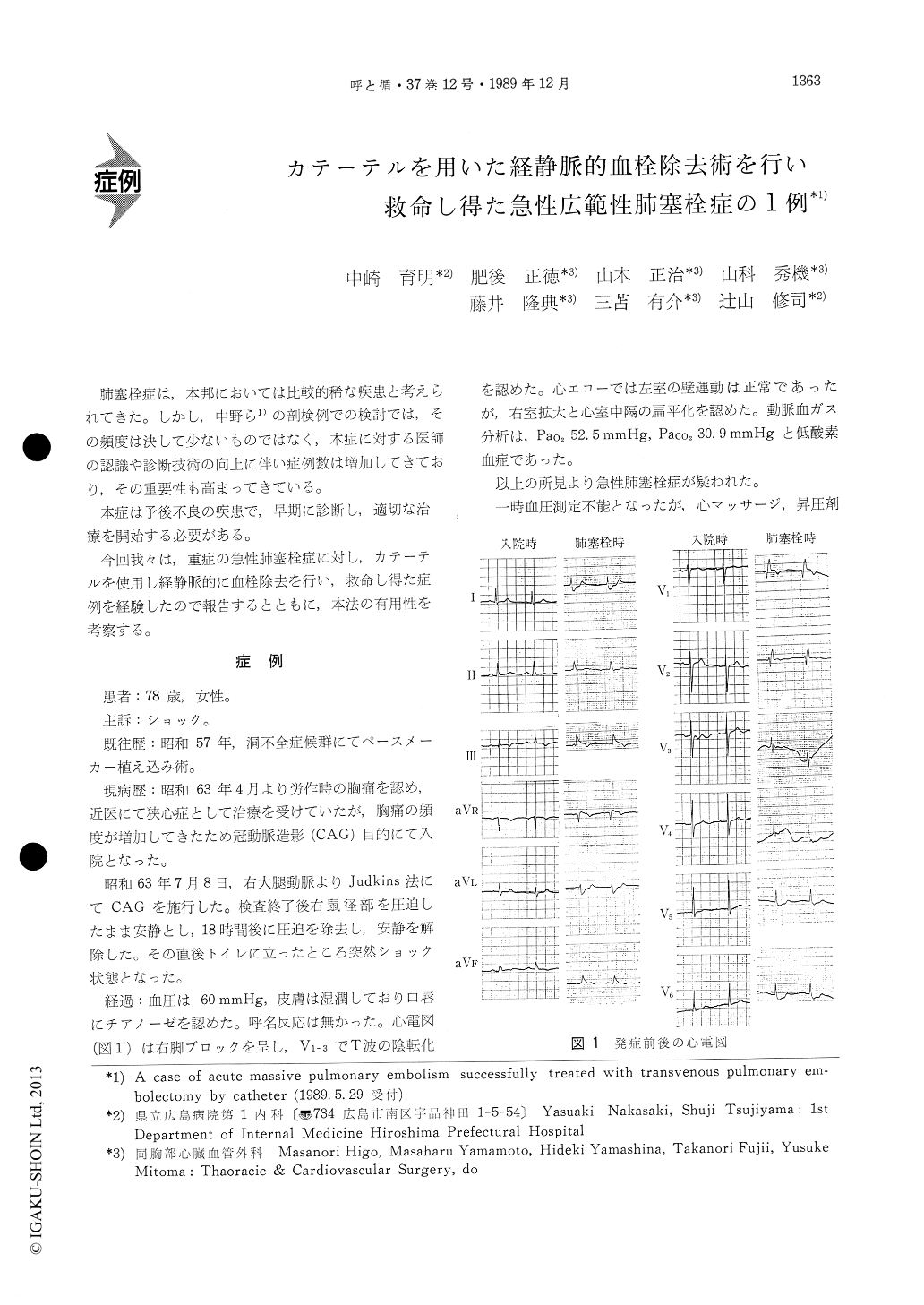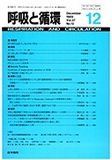Japanese
English
- 有料閲覧
- Abstract 文献概要
- 1ページ目 Look Inside
肺塞栓症は,本邦においては比較的稀な疾患と考えられてきた。しかし,中野ら1)の剖検例での検討では,その頻度は決して少ないものではなく,本症に対する医師の認識や診断技術の向上に伴い症例数は増加してきており,その重要性も高まってきている。
本症は予後不良の疾患で,早期に診断し,適切な治療を開始する必要がある。
A 78-year-old woman, suffering from acute massive pulmonary embolism, was successfully treated with transvenous pulmonary embolectomy by catheter.
This patient had been suffering from oppressive chest sensations during exercise, and diagnosed and treated as angina pectoris at a nearby clinic.
She consulted our hospital complaining that her chest pains were increasing in frequency.
She was admitted to our hospital on July 7, 1988, for coronary angiography (CAG), which she under-went on July 8 by the right femoral approach. After the CAG, she was ordered to rest in bed overnight, with the right inguinal region compres-sed. 18 hours later, the compression was removed and she was allowed to walk. Soon after she walked to the toilet, she complained of chest discomfort and fell into shock (systolic blood pressure was 60 mmHg).
An ECG examination showed a right bundle bran-ch block and an inverted T wave in lead V1-3. An echocardiography showed normal contraction of the left ventricle, but an enlargement of the right ven-tricle and a flattened interventricular septum. An analysis of arterial blood gas showed hypoxia (Pao, 52. 5 mmHg, Paco2, 30. 9 mmHg).
Acute pulmonary embolism was suspected. 240,000 units of urokinase were administered intravenously, and pulmonary angiography was performed imme-diately. It revealed that the bilateral pulmonary arteries were almost completely obstructed. Altho-ugh 720, 000 units of urokinase were infused into the pulmonary artery, the obstruction did not improve.
At that time, we performed a transvenous pul-monary embolectomy. We used a Judkins R 4 gui-ding catheter for PTCA made by USCI. The ca-theter was inserted into the pulmonary artery and clots were aspirated with a syringe. When the catheter clogged, it was withdrawn and flushed. This procedure was repeated until the pulmonary embolism was relieved.
The patient's blood pressure rose to 124170 mmHg, and right ventricular pressure, which was 49 mmHg before the embolectomy, dropped to 36 mmHg.
A pulmonary scintigraphy 3 day after the embo-lectomy showed almost normal blood flow.
The patient was discharged 2 weeks after the embolectomy.
Transvenous pulmonary embolectomy by catheter was first reported in 1971 by LJ Greenfield. But after his initial report, few other cases have been reported. In Japan, only one case was reported in 1989 by F Sato.
This method has several advantages when com-pared with other therapies commonly undertaken in recent years. We think that this method should be attempted for patients with serious pulmonary embolisms. This combined with thrombolytic the-rapy may be quite successful.

Copyright © 1989, Igaku-Shoin Ltd. All rights reserved.


